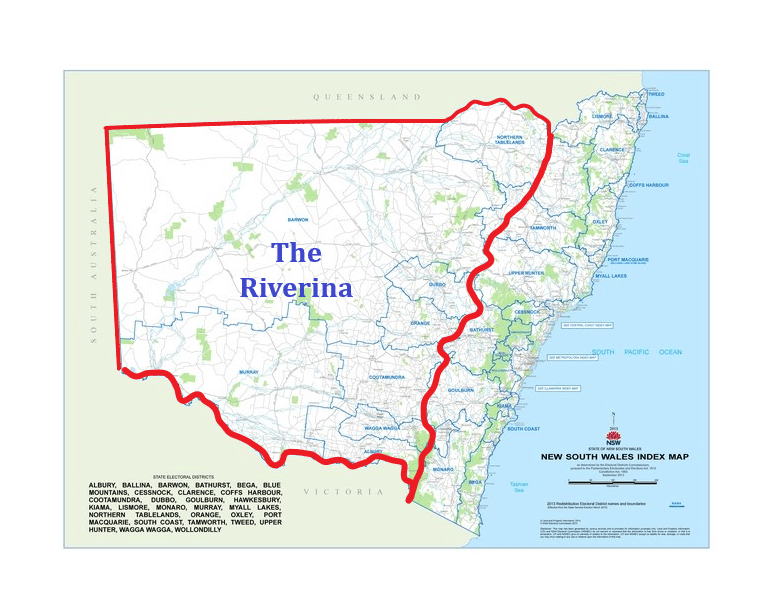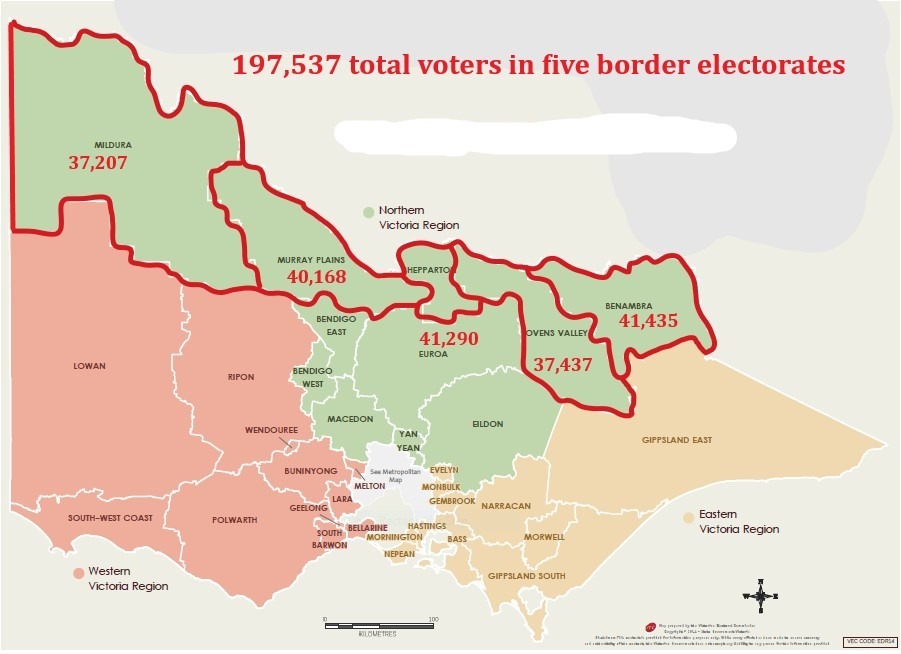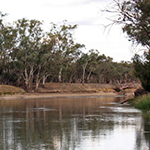Objectives
Primary Objective
That The Riverina be a State of the Commonwealth of Australia.

The Riverina is generally the N.S.W. state electorates west of the Great Dividing Range (though not limited to these), including water management infrastructure such as Lake Mulwala, Hume, Burrinjuck and Blowering dams, and the Murray River.

And the northern electorates of Victoria, including Eilden and Dartmouth dams.
Preliminary Objectives
Gain the consent the Parliaments of N.S.W. and Victoria for the formation of The Riverina State as provided for in Section 124 of the Australia Constitution.
Preceded by – A referendum of the People in the proposed Riverina (not the entire states) on whether to form The Riverina State.
Preceded by – Promoting the formation of The Riverina State.
– Petitioning the NSW and Victorian parliaments to hold a referendum.
– Registering a Party named The Riverina State and standing and endorsing candidates in State and Federal elections.
– Whatever other activities will assist State formation.
Preliminary Proposals
That a method of governance be established and written in a constitution, and this constitution be approved by a majority of the People in The Riverina.
That the laws, services and agreements of N.S.W. and Victoria at the time of the formation of The Riverina, subject to the Constitution of The Riverina and subject to consequent laws formed in The Riverina, be the founding laws, services and agreements of each previous state section of The Riverina i.e. the laws etc of NSW apply to the NSW section, while the Victorian laws etc apply to the Victorian section.
That after six years the founding laws, services, and agreements of NSW and Victoria cease to apply in The Riverina, with only the laws, services and agreements formed in The Riverina then applying.
Proposed Inclusions in the Method of Governance
1) Electorates based on population but subject to area limits.
That the governance of the state include a Legislative Assembly consisting of members elected from electorates consisting of 10,000 voters (plus or minus 1000) – subject to electorates being no more than 10% of the area of the state, and subject to no more than ten electorates in 10% of the area of the state.
The purpose of area limits is to ensure the People from all areas of The Riverina have effective representation in parliament, and prevent a re-creation of the current domination in N.S.W. of people from one area (Newcastle, Sydney and Wollongong) over people from all the others.
Formation of law shall originate in the Legislative Assembly and require the assent of the Premier.
2) Term Limits
To prevent creation of permanently entrenched members and associated ill effects detrimental to the people, membership of the Legislative Assembly shall not exceed eight consecutive years or twelve years total.
3) The Premier elected by the People.
That governance include a Premier elected by the People, separate from the Legislative Assembly, responsible for executing governance and law of The Riverina. For the same reasons as in the Legislative Assembly, a Premier’s service shall not exceed eight consecutive years or twelve total years.
The Premier may appoint Ministers subject to the Premier, with the assent of the Legislative Assembly, to assist with governance. Ministers shall not be members of the Legislative Assembly.
The purpose of the Premier being elected by the People, and the Premier and Ministers separate from the Legislative Assembly, is to ensure that the Premier and Ministers are more directly subject to the People rather than probable factions of the Legislative Assembly. This will further ensure unbiased formation and application of the law, and further ensure impartial and competent governance, and further prevent corrupt expenditure of public money.
4) That governance include a Judiciary, separate from the Premier and Legislative Assembly, appointed by the Premier with the assent of the Legislative Assembly.

